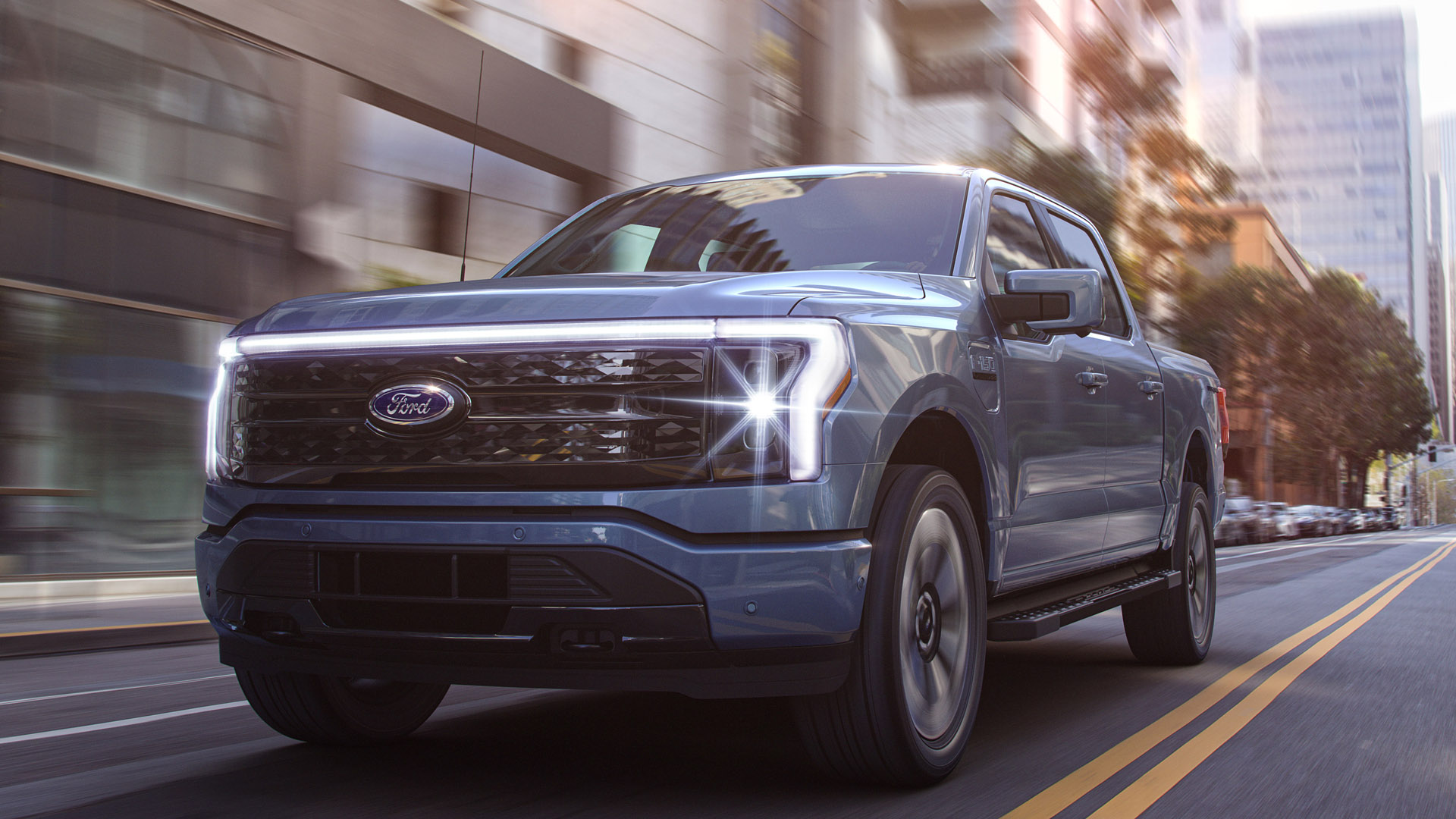

The Ford F-150 Lightning has proven immensely popular since its launch and there’s already serious talk that its range could be bigger than the declared max of 300 miles. Like, much bigger—think 450 miles or more. That’s exciting enough but when The Drive interviewed Ford CEO Jim Farley, he heavily foreshadowed there being even more range to come via updates.
“I think the demand for F-150 is so robust right now, we really just need to do a great job launching that product,” Farley explained, saying he believed the F-150 Lightning was a car with a future into the next era of EVs. “Is it exciting for us, and does it encourage us to make other investments? Yes, absolutely. The most exciting thing for us is this: most people think this kinda second inning of electric [cars], the first innings of electric played out the last 10 years, maybe the last 100, but the last 10 were most prominent… the next innings that we’re entering, you’ve got vertical integration to bring the cost down to $80 a kilowatt-hour.”

[Editor’s note: The Drive recently interviewed Ford CEO Jim Farley, a full transcript of which can be found here. This is one of several accompanying stories we’re publishing to highlight the most newsworthy details from the conversation.]
Hardware-wise, bringing down the cost per kWh is great but there’s also the option of working smarter, not just with more lithium-ion storage. Farley said that EVs in the current era are a software product as much as they are a hardware product, but ultimately, Ford has to make good cars at launch.
“People are creating a software-driven product, like a digital product,” Farley said. “There’s a lot of things happening differently than in the first innings. The first innings, most of the logic was, ‘well these are rational buyers like with the Prius, so let’s make some kind of compact, affordable electric cars.’
“And what we kind of found out was that what early adopters, the early majority, wanted was the good stuff. So now we’re making the good stuff, like F-150, and E-Transit, which is very emotional for our van family. We’re the number one van maker in the world, with Transit, and we’re the number one sports car company with Mustang, and that’s now electric. So I think that’s definitely the direction. But we have to make sure we pull it off commercially.”
Some of the pressure to deliver a good product at launch is definitely hardware-based, wanting to avoid woes like Chevrolet’s with the Bolt recall. But looking to the future, Farley said, involves planning to continuously update cars from launch onwards.
“The most important part of that is the software part. Is that F-150 Lightning’s range 20 miles longer the year after it launches? The same one. We gotta get out of this job one mentality, where anything good comes from a new product.”
This would be far from the first time an EV maker extended cars’ range after release. Jaguar gave I-Pace owners an update that boosted range by eight percent after it transferred software lessons from a race series it ran using modified versions of the SUV to implement more efficient regeneration and energy use in the road car.

When asked specifically if Ford would implement OTA updates to improve ownership after purchase, Farley replied, “Yes. And the experiences, it may be a physical experience, like pick up and delivery. Maybe, who knows. There are lots of things we’re thinking about on the physical service side that’s enabled by a connected car. I think that’s the real test of our fitness.
“Not like, how many different versions of the Lightning we should make. That day will come, we think 40 percent of our lineup in a few years will be electric, and we’re building that variety. But for us right now, we got our heads down on what the second innings wants.
“And that’s iconic products, electrified not just in propulsion, but a digital vehicle. Power your house for three days—all that stuff is important. The most important thing is the fitness of the company to use that platform to make a better experience for the customer. That to me is a more important test than if we’re gonna have a Raptor Lightning.”
Got a story tip? Mail us on tips@thedrive.com